Centuries Old Clement French Caribbean Créole Shrubb the New Garden Guy
Clement’s Caribbean Créole Shrubb is a superb blend of the finest white and aged Agricole Rhums, interlaced with macerated Créole spices and sun-bleached bitter orange peels. Its sunny aromas and flavors are themselves reminiscent of Martinique. A staple of Caribbean culture, Créole Shrubb is the “secret ingredient” frequently used by celebrity chefs and creative mixologists around the world.
This golden liquor spirit has been described best as “sweeter than the average spiced rum due to sugar-cane syrup being added. It also works on the sweeter side of the spiced-rum spectrum as well, with its garden orange-blossom scent, light but lingering juicy orange flavor and faint cinnamon and clove glow on the finish. We cannot wait to try it on a vanilla bean ice cream sundae with plump raisins.
The fascinating term “shrub?” It happens to beis the name of two different, but related acidulated beverages. The first, such as Clement’s Caribbean Créole Shrubb, falls into the category of a fruit liquor popular in 17th and 18th century England, typically made with rum or brandy, and mixed with sugar and the juice or rinds of citrus fruit.
The early English version of the shrub arose from the medicinal cordials of the 15th century. The drink gained popularity among smugglers in the 1680s trying to avoid paying import taxes for goods shipped from mainland Europe. To avoid detection, smugglers would sometimes sink barrels of spirits off-shore to be retrieved later. The addition of fruit flavors helped mask the taste of alcohol fouled by sea water.
Clement falls into is a fruit liquor popular in 17th and 18th century England, typically made with rum or brandy, and mixed with sugar and the juice or rinds of citrus fruit.As a mixture of fruit and alcohol, the shrub is also related to the punches although these were normally served immediately after mixing the ingredients, whereas shrubs tended to have a higher concentration of flavor and sugar and could be stored for later use, much like a pre-made drink mixer.
An early Rum Shrub recipe from The English and Australian Cookery Book called for almonds, cloves, cassia, and the peel of oranges, “infused in the best rum,” with the addition of a thread of ambergris and vanilla. “Good shrub is very delicious, and were it fashionable it would obtain rank as a liqueur.” And now it is indeed very fashionable.
Martinique long history and stellar reputation of having the best terroir for sugarcane cultivation did not always ensure success. This was even long before Homère Clément had the imaginative idea to press sugarcane to produce Rhum Agricole. The introduction of sugar beets and the increasing availability of cheap South American sugar resulted in the collapse of the Martiniquean sugar commerce.As a result, the local economy, which was driven by the principle cash crop of sugar, was in shambles. Many planters were out of work and took to the streets rioting against the bankrupt plantation owners. What once was a rich and lively island was quickly mired in economic despair. Homère Clément was a very popular member of the Martiniquean community and the mayor of Le Francois at the time. He purchased the prestigious sugar plantation known as Domaine de l’Acajou just 3 kilometers from the center of Le Francois. This 43 acre estate was considered one of the best sugar plantations on the island of Martinique. But as it was stuck in a poor and stagnate sugar economy, and had been forced into bankruptcy.
Homère Clément made the necessary investments and transformed one of the island’s most prestigious sugar plantations into a producer of world-class Rhum Agricole. He had the planters return to the fields to harvest sugarcane once again, but not to refine sugar. His idea was to press his quality estate grown sugarcane to extract first-pressed aromatic and flavorful sugarcane juice to distill pure rhum. Inspired by the enjoyment of great brandies while studying in his early years in Paris, Homère mimicked the distillers of the great Armagnac’s of southwestern France to perfect his method of rhum production known today as Rhum Agricole.
The shrub was itself a common ingredient in punches, either on its own or as a simple mix with brandy or rum. It was also traditionally served during the winter holiday season mixed with raisins, honey, lemon, sherry, rum and other spirits. The shrub was sold in most public houses throughout England in the 17th and 18th centuries, although the drink fell out of fashion by the late 1800s.
Nancie McDermott’s slim volume, “Fruit: A Savor the South Cookbook”, packed with historic, nostalgic and esoteric information is another introduction to this very same shrubs, fruit preserved in vinegar and used to make beverages,Horchata de Melon Cantaloupe-Seed Drink is very practically prepared from the seeds of the cantaloupe. The other is a Strawberry Shrub beverage made with vinegar. Both would make terrific additions to cocktails with a base of Clement’s Caribbean Créole Shrubb
The second use of the term “shrub” refers to a cocktail or soft drink popular during the Colonial era in America, stemming from the base, a sweetened vinegar-based syrup from which the cocktail is made also known as drinking vinegar. This is often infused with fruit juice, herbs and spices, for use in mixed drinks. Colina bar at the Colina at the Four Seasons is known for their cocktails made with this ingredient.
We were delighted to see the (southern) fruit shrubs in a mezcal drink, Pezca Mezca using peach shrub as one of the fascinating ingredients. It balances out the unlisted spiky habanero pepper. 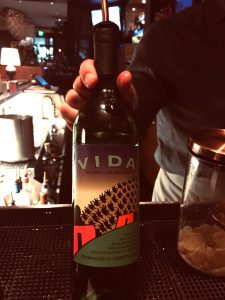
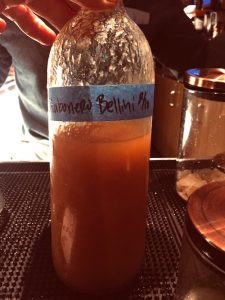
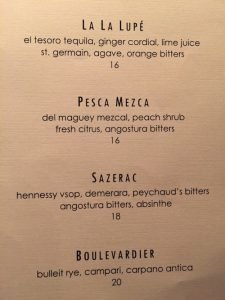


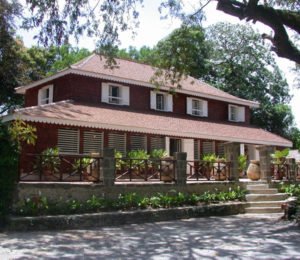

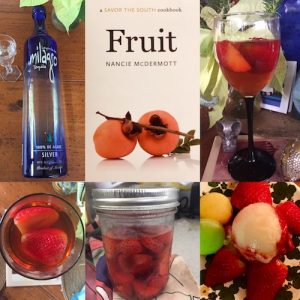
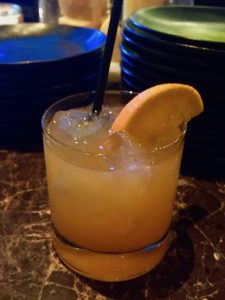
 Gerry Furth-Sides
Gerry Furth-Sides  Barbara Hansen
Barbara Hansen  Chef-owner Alain Cohen
Chef-owner Alain Cohen  Roberta Deen
Roberta Deen  Jose Martinez
Jose Martinez  Nivedita Basu
Nivedita Basu